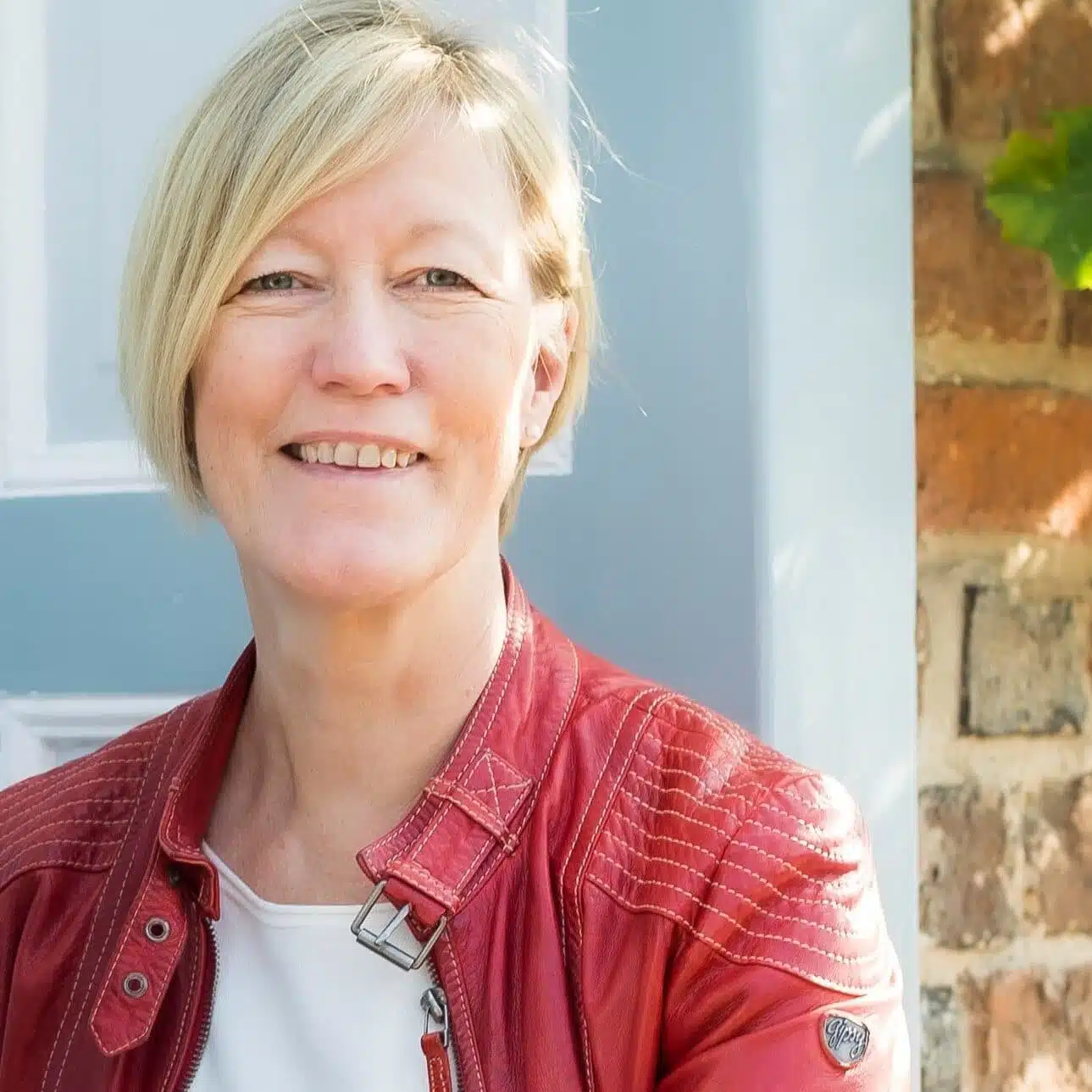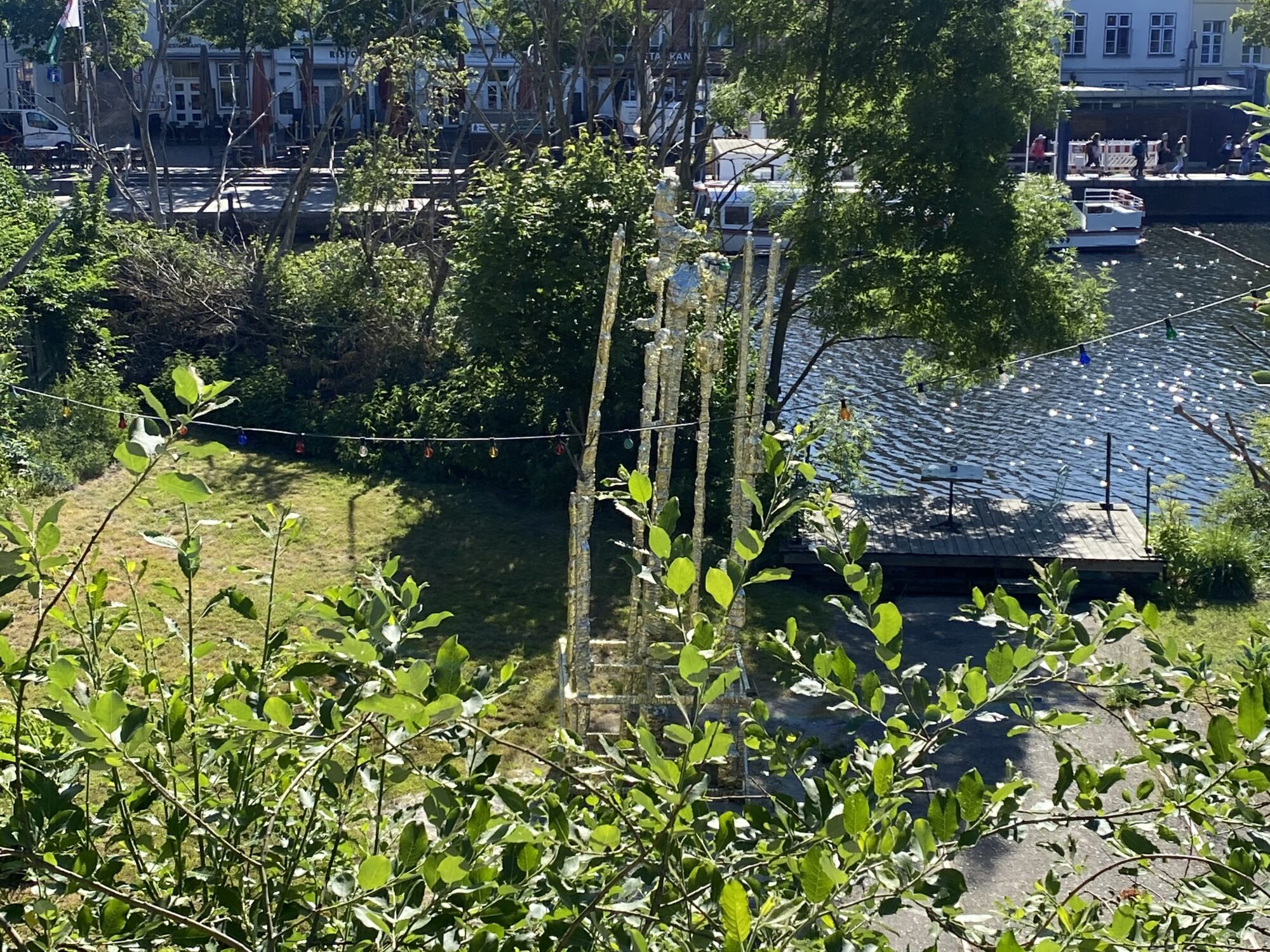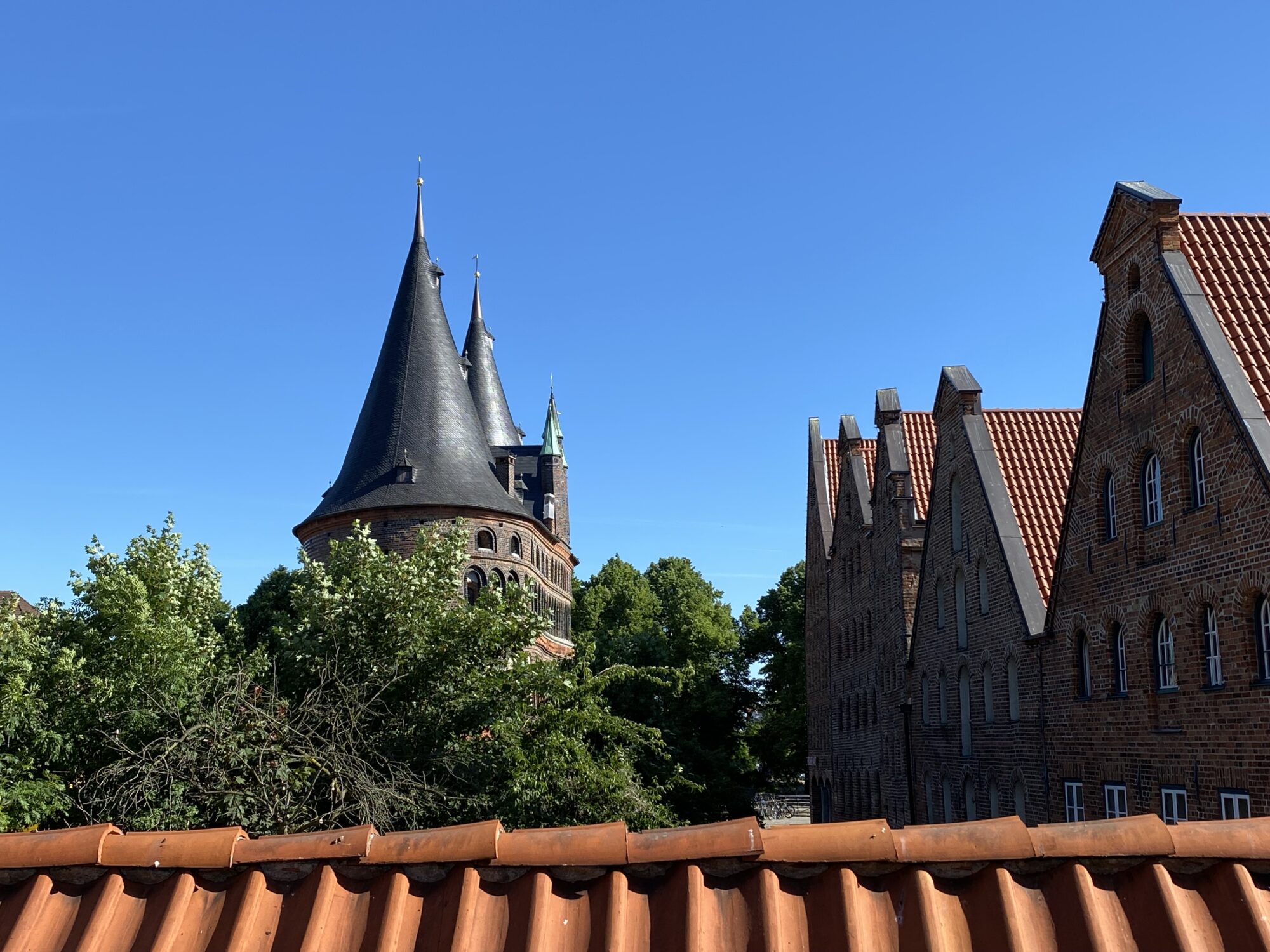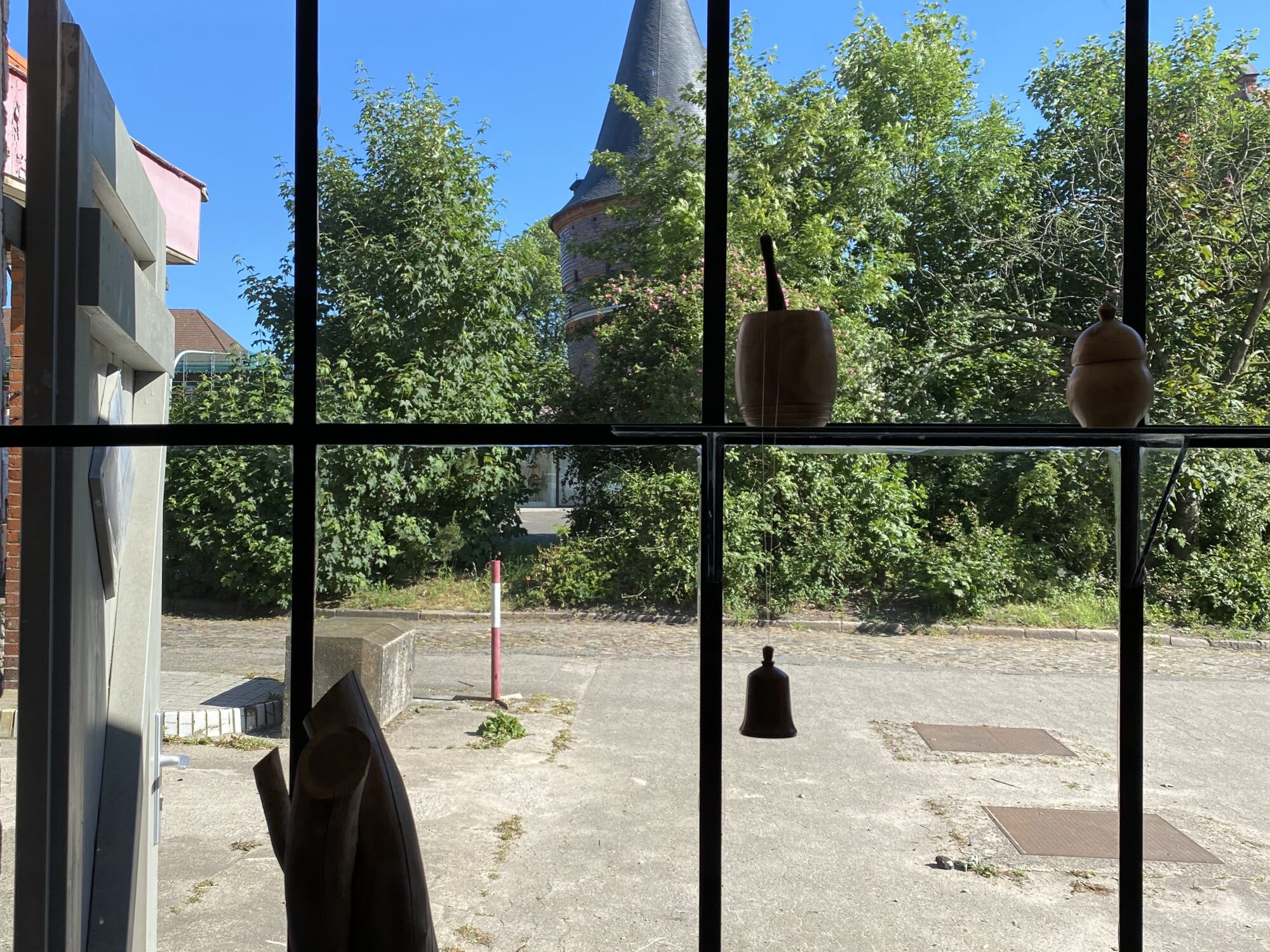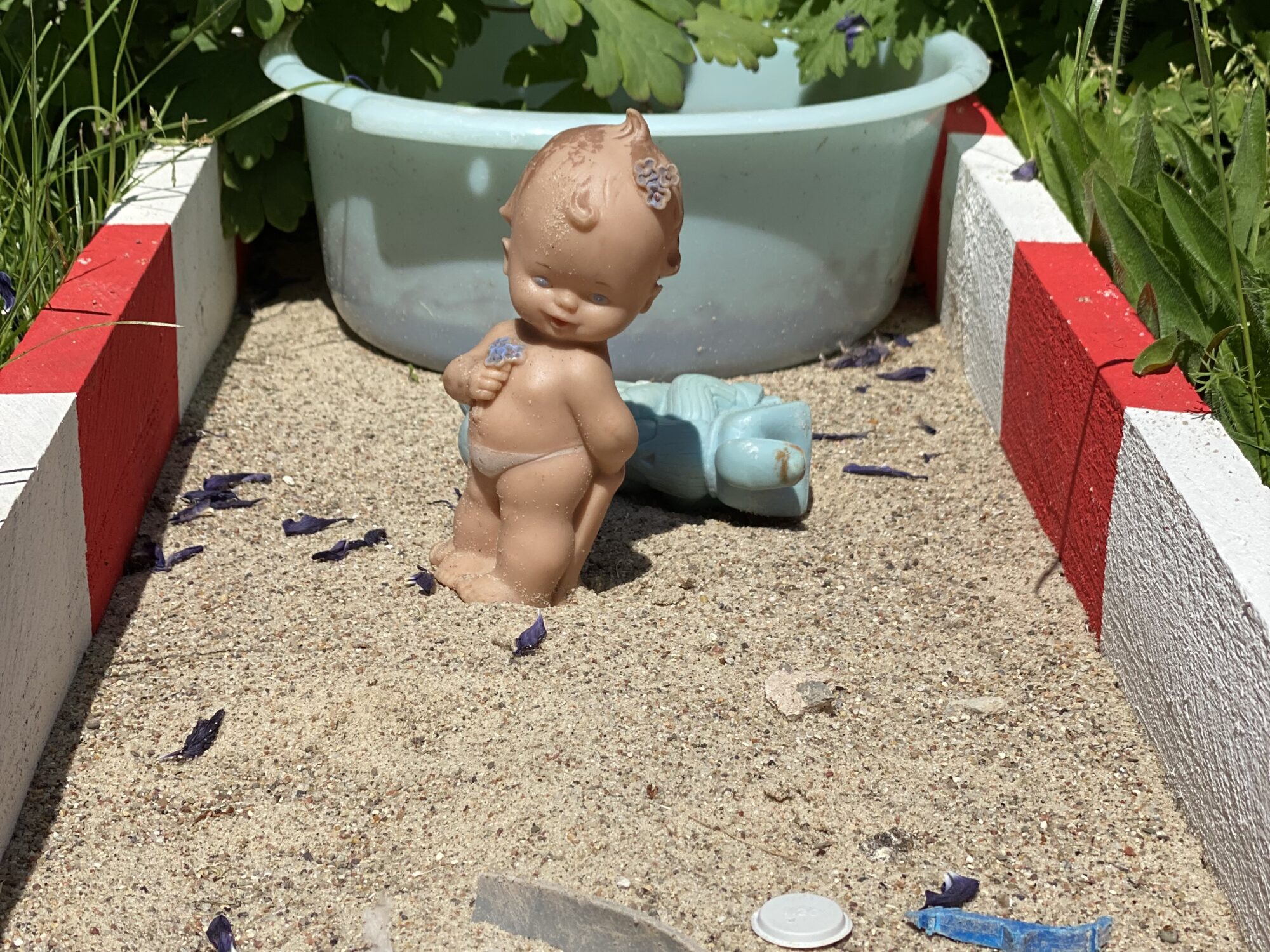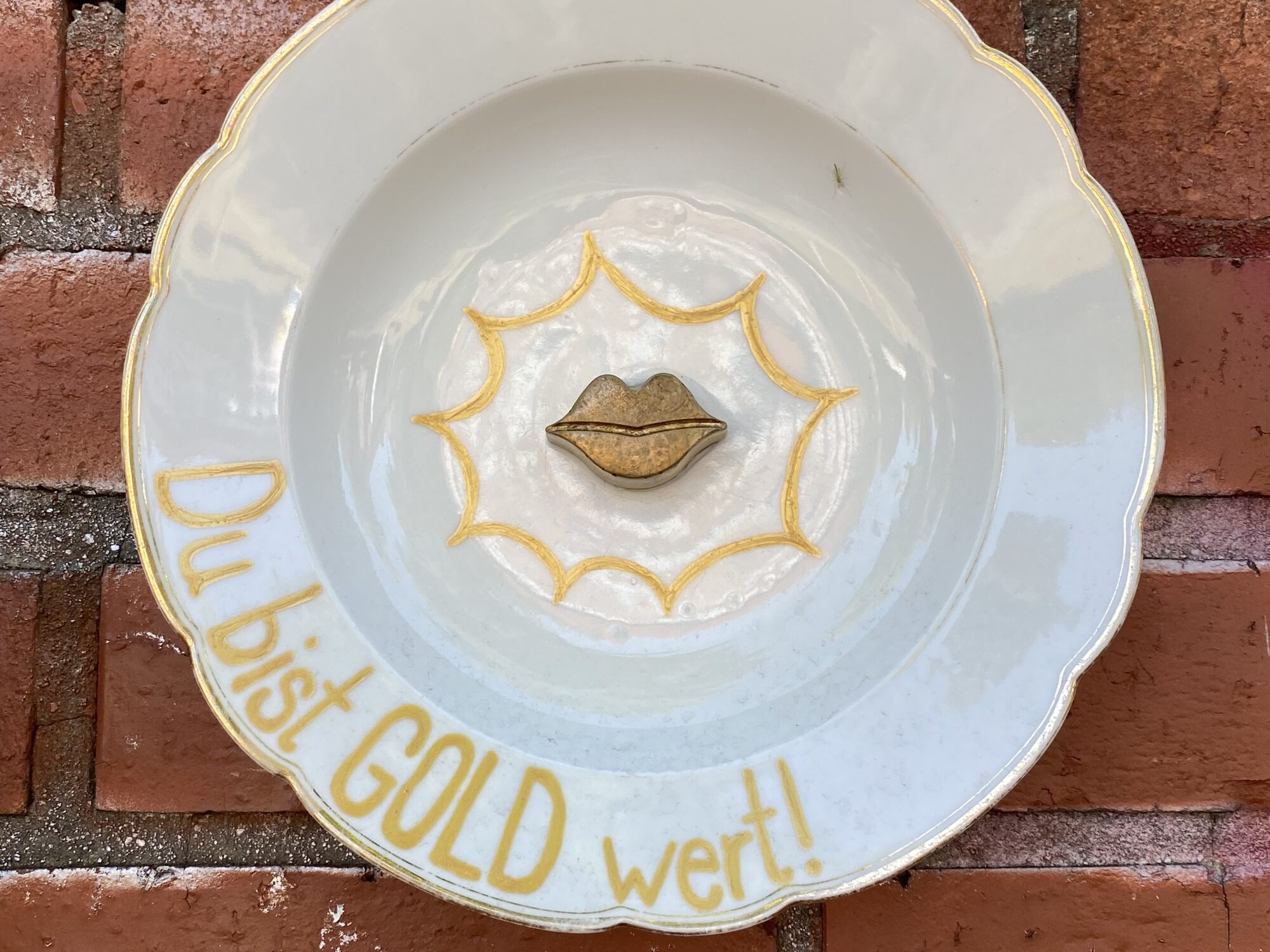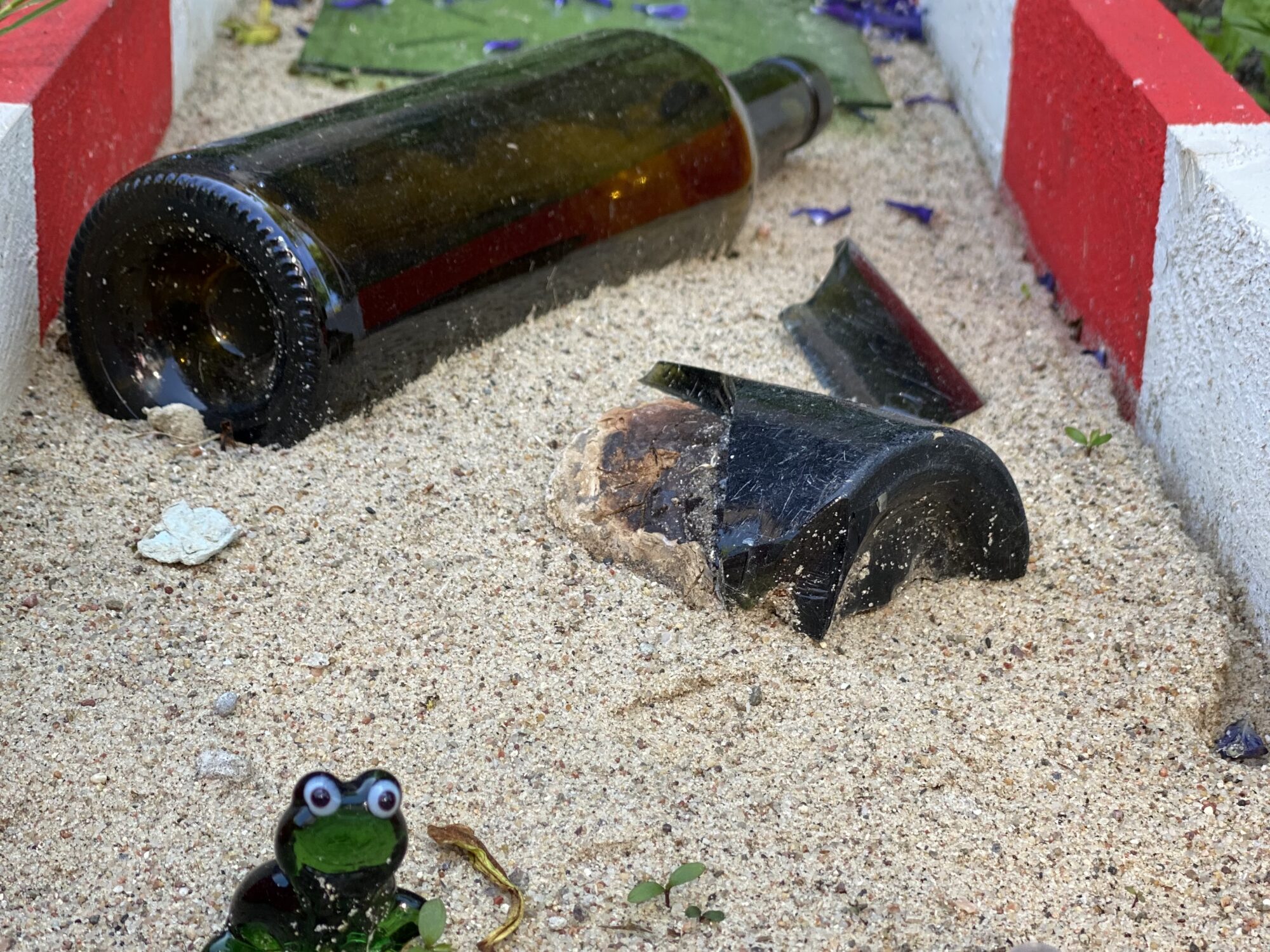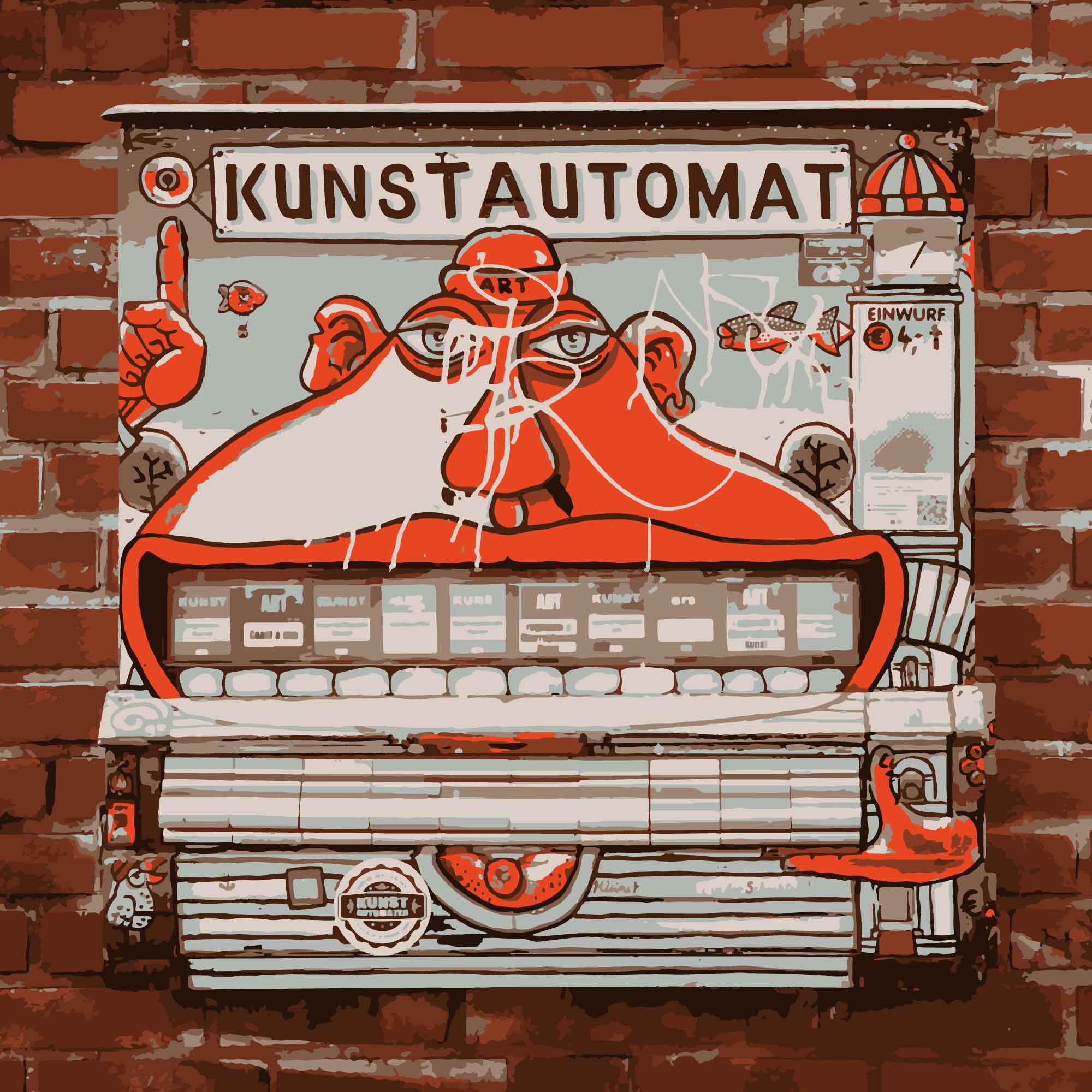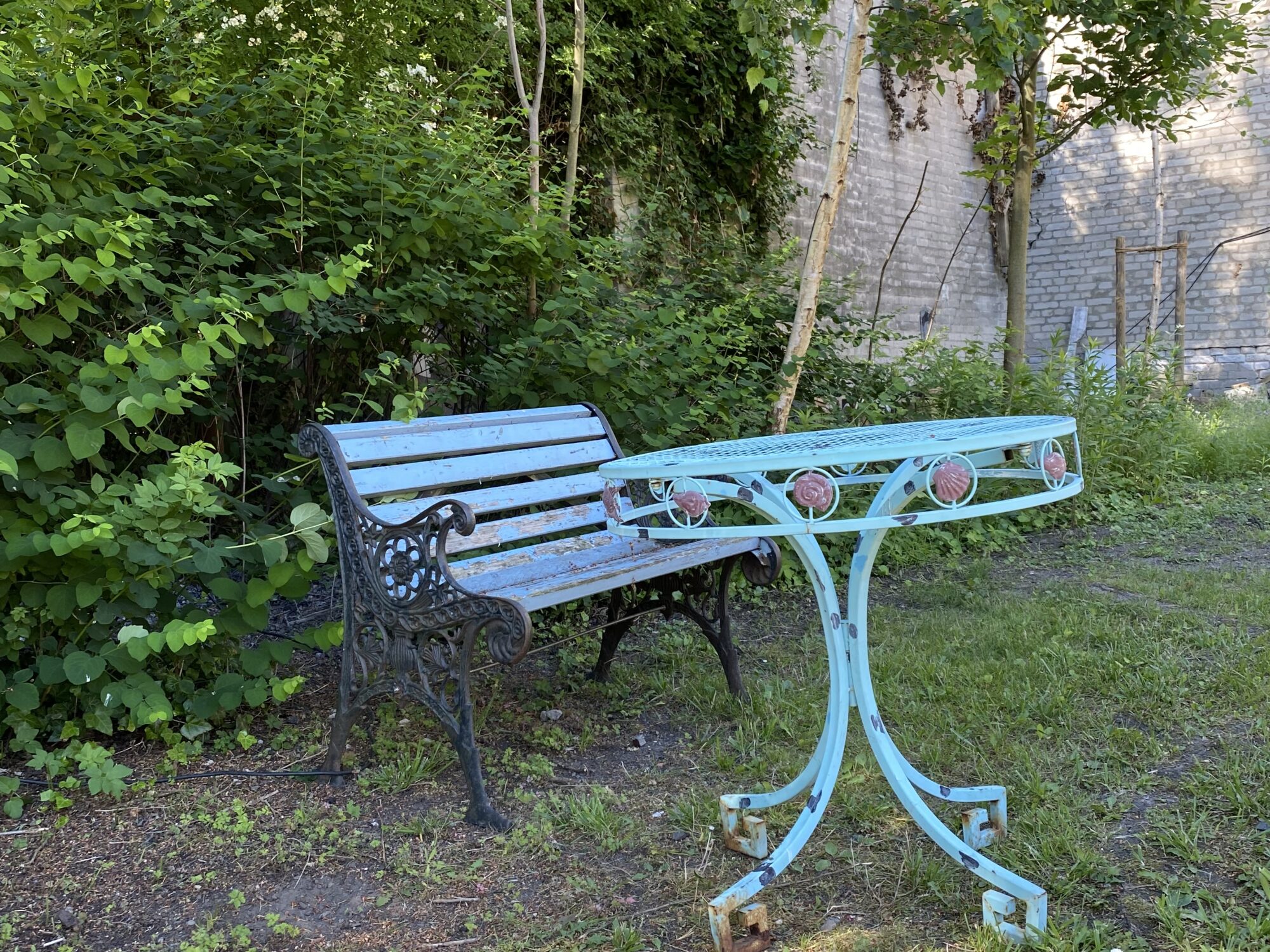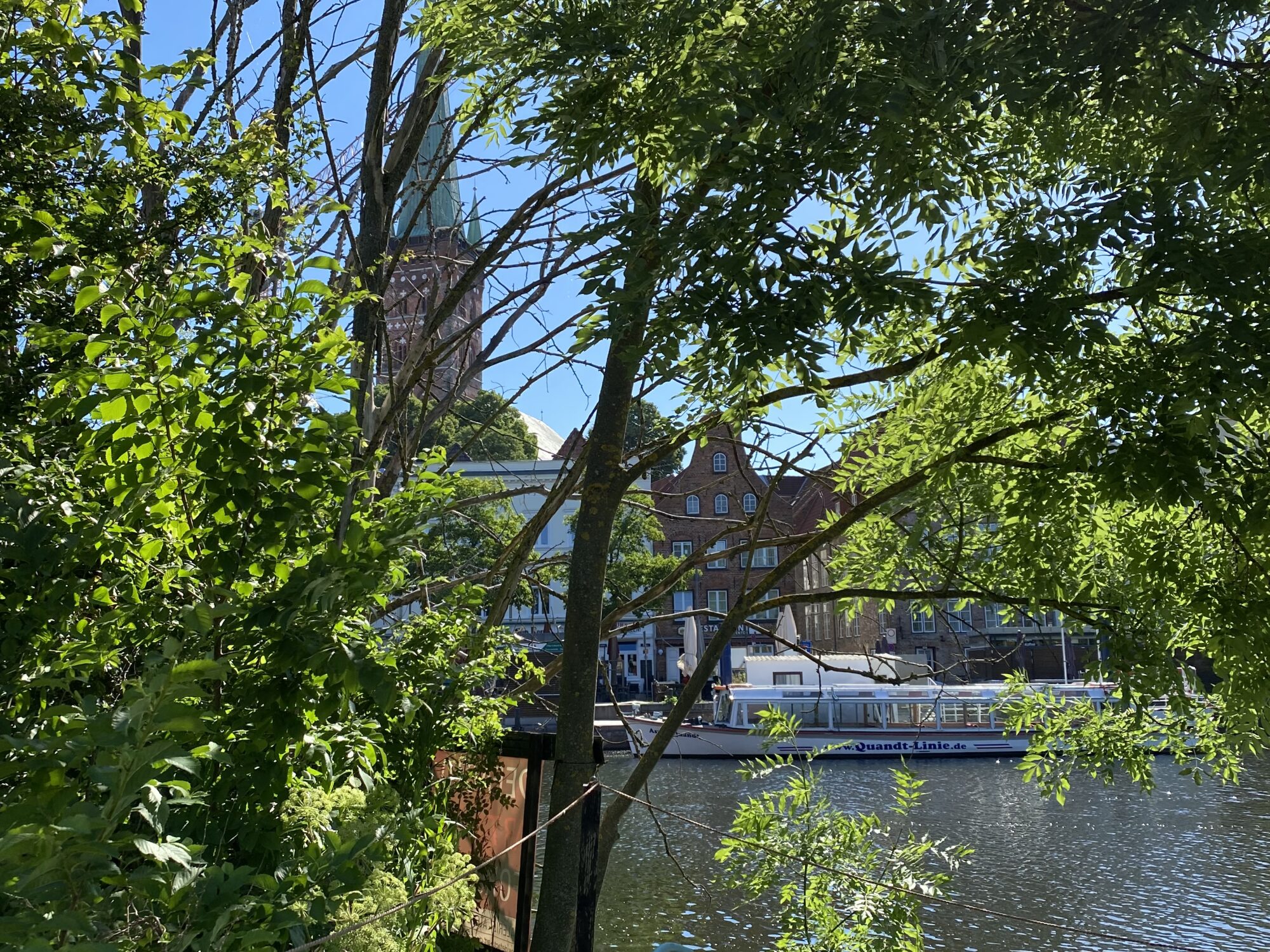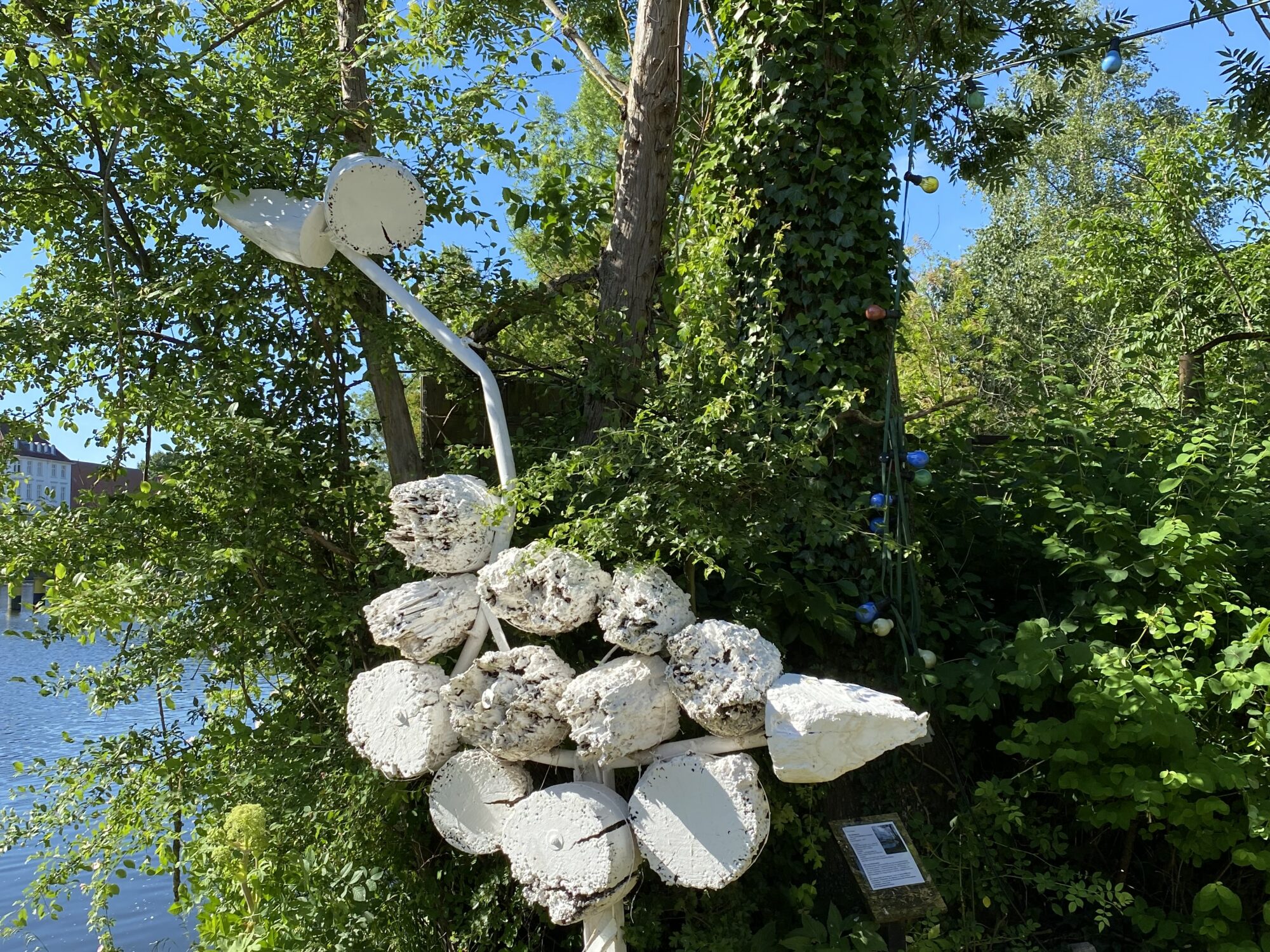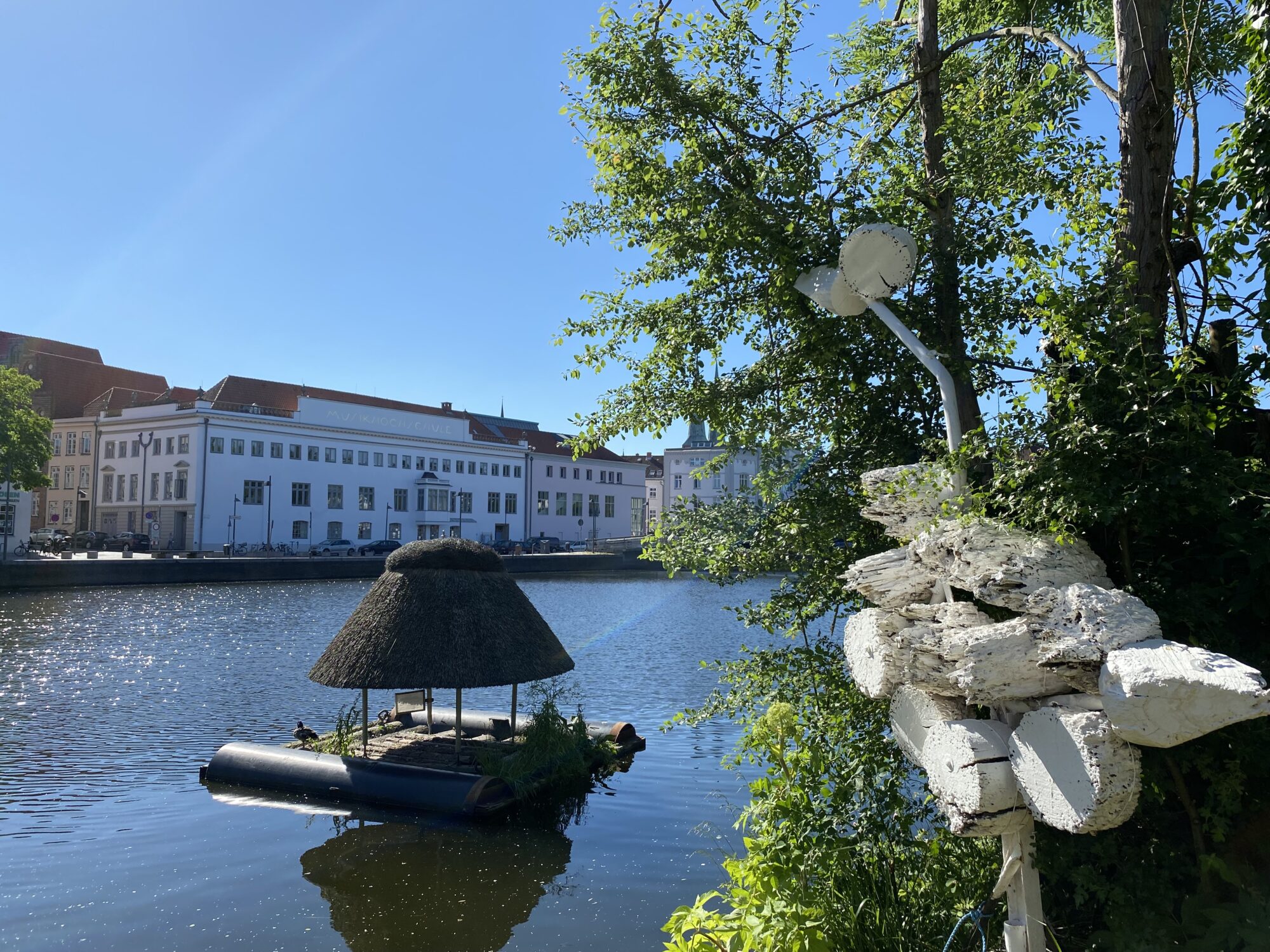Leo Tolstoy is not exactly famous for short treatises. Just think of his monumental work “War and Peace”. So it is not surprising that he also devoted 237 pages to the question “What is art?” He was convinced that people communicate their feelings to each other through art. An exciting place in Lübeck to pursue Tolstoy’s question, experience art, and engage in exchange with creative people is my destination today: the Defacto Art Kunsttankstelle at Wallstraße 3.
My interlocuteur today is the 1st chairman of the Association Peter Fischer, who spontaneously invites me up to the roof. Had I known, I would have worn sturdy shoes…. A micro-adventure, but one I’m very happy to get involved in. From up there, I have never seen the Holsten Gate which is within reach, and the Obertrave embankment, with the striking tower of St. Peter’s, opposite. We inspect the new skylights. Some of the discs used in 1951 were in need of renewal. Which brings us straight to the topic: the past months of the lockdown were used for extensive modernization and repair work at the Defacto Art Kunsttankstelle, which was made possible primarily thanks to the Possehl Foundation, which is so invaluable to Lübeck. New sanitary facilities, a meeting room, a new kitchen, a completely new screed covering in the workshop building, 18 new doors, each of which had to be individually dimensioned and made.
Defacto Art Kunsttankstelle looks fresh, but it is not flawless. Not everywhere is tidy, not everything is smooth and sheer. And it is precisely such a “work in progress” that the art filling station is intended to be. The facility has retained its unique post-industrial charm.
gasoline for the soul
In 1926, the Schulze & Oltmanns company was founded in the salt warehouses. There were an auto repair shop, a gas station, and a garage rental business. The gas station was located on the street, the parking spaces in the warehouses, a lifting platform outside in front of it in the open air. In 1936, the salt warehouses were to be renovated and after that used as a department store. As a replacement, the company founder received the neighbouring property Wallstraße 3/5 from the city, where he built a new service station. In 1951, a garage yard and the workshop or wash hall were added. In 1989, the gas station operation was discontinued, and in 2011, the lease agreement with the city ended. Since then, the area lay fallow, the buildings were left to decay.
In 2016, the buildings were given to the artists’ association Defacto Art e.V. after it had become increasingly difficult, especially for freelance visual artists and artisans, to rent small studios and workshops in central locations. However, the association has only been the owner since 2020. Thus, many creative people have found a place to exhibit their work. In the U-shaped courtyard, all workshops are already occupied. And just a few weeks ago, further garages with a view of the tips of the Holsten Gate were handed over to their intended use.
The creative spectrum of the 55 artists of the Defacto Art Kunsttankstelle ranges from photography to graphic art, painting and sculpture to interactive installations. The artists want to be right in the middle of it. To be responsive to guests who drop in spontaneously and to those who visit the exhibitions.
THINKING OUTSIDE THE (ART)BOX
The fact that art doesn’t have to seem aloof was also my impression during my first visit here on Museum Night 2015. What could be better than letting yourself drift, taking a look at the workshops, getting into conversation with a creative person. Admire talents. To stop and ask oneself the much-quoted question: Is this art? Or can that go away? To pose this question is also absolutely allowed. Yes even desired. Peter Fischer is convinced that a person enters into a dialogue with art at the exact moment he pauses in front of a work. Wondering what this (is supposed to be). Finds that he can do nothing with it. Or that it makes a chord in him sound.
The freedom of Defacto Art Kunsttankstelle
After all, there is no person, determining what is right or wrong when it comes to art. That’s why it’s so much fun. You don’t have to have a degree to be allowed to comment on art. All it takes is the courage to look and allow your own impressions and emotions to come up. And quoting Joseph Beuys we all know: “Everything is art”. So also the curious stuff is interesting. This reminds me of the current episode of the podcast “Lübeck ZWISCHENTÖNE”, where we also take a trip into art and culture.
This is one of Lübeck’s most photographed installations, the “Annunciation”, consisting of a group of mannequins balancing on a wire rope. Symbolizing artists who are looking for a place to create and show their works and to whom an annunciation angel gives the good news that there is a place for them at the Kunsttankstelle.
until the drilling shells came…
My absolute favourite place is the garden of about 400 square metres, which can be reached through the workshop building. This is also where Peter Fischer’s “Trabohran”, the TRAvemünde BOHRmuschelpfahlschwAN, is located, which in turn tells its very own story, closely interwoven with the Trave, the Baltic Sea and the drilling shells. I’ll just tell you that in its first life it was a larch and then did duty as a driven pile in Travemünde harbour for about 40 years.
From the garden there is a magnificent view of the banks of the Trave river, paddle boats passing by, people enjoying the sun and a family of ducks. An almost private atmosphere. Sitting here under willow trees, Lübeck belongs to me in all its splendour, but also with all the nooks and crannies that the Kunsttankstelle as preserved. But maybe you’ll come around and join me?
You can find all info about the Defacto Art Kunsttankstelle here:
